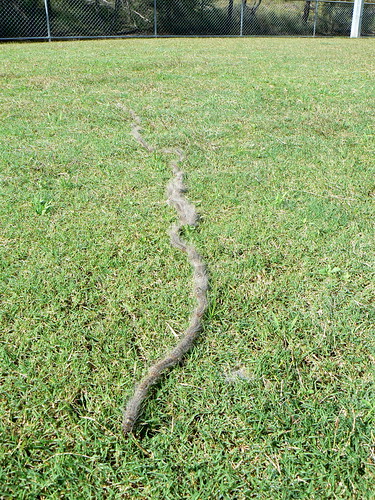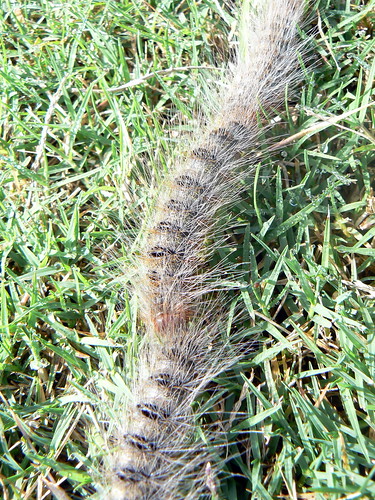But on closer inspection, he realised it was a procession of caterpillars....
These are Ochrogaster lunifer, commonly and sensibly known as Processionary Caterpillars and found across much of Australia. The procession was two to three metres long, consisting of nearly seventy individuals.
During the day, these caterpillars nest communally on the branches of the plants that form their diet: Acacia species. By night, they eat, eventually completely defoliating the tree, and then move on to find another.
They travel as they were this morning in a search for a suitable area in which to metamorphose into moths. It makes a lot of sense for them to congregate in this manner, as by appearing to be one large organism, they are less attractive to predators. In addition, their hairs (and those of the adult moth) can cause urticaria, a painful and persistent rash, also a good form of deterrence against anything considering them a potential lunch.
Adult moth.
Links:- CSIRO Entomology - Australian Moths Online
- Australian Insects
- Van Schagen, J.J. and Majer, J.D. and Hobbs, R.J.. 1992. Biology of Ochrogaster lunifer Herrich-Schaeffer (Lepidoptera: Thaumetoedae), a defoliator of Acacia acuminata Bentham, in the Western Australian wheatbelt. Australian Entomological Magazine 19 (1): 19-24.



I'd never heard of them, that's amazing! We don't have them in France (as far as I know), but we do have hairy caterpillars that hang down from oak trees on threads at about this time of year. Not nice if you walk into them!
ReplyDeleteI've never seen anything like those caterpillars. At first I thought it looked like a snake skin. Fantastic post!
ReplyDelete